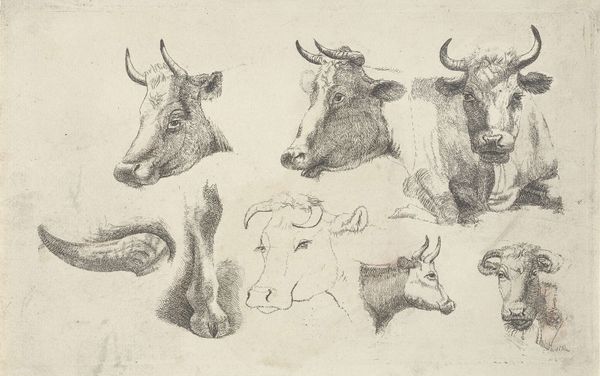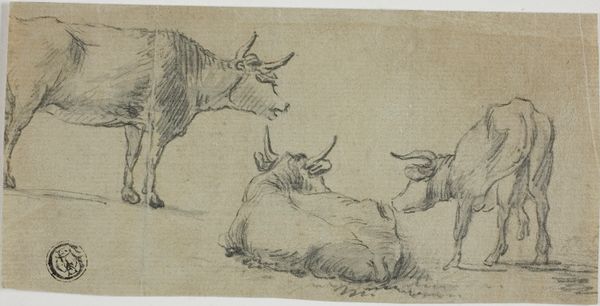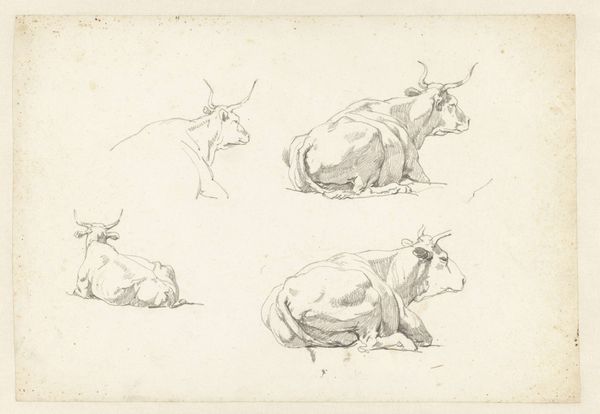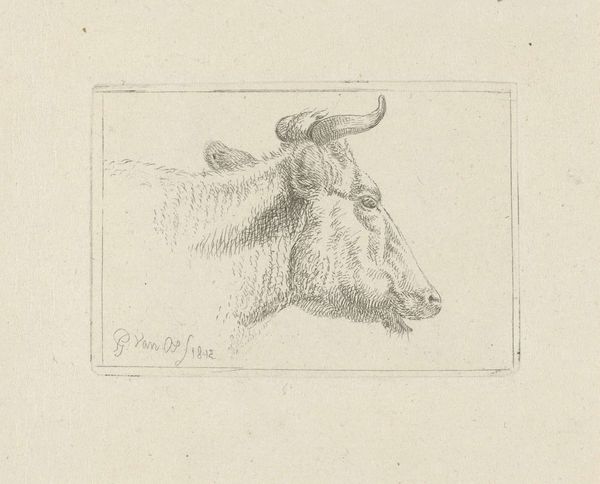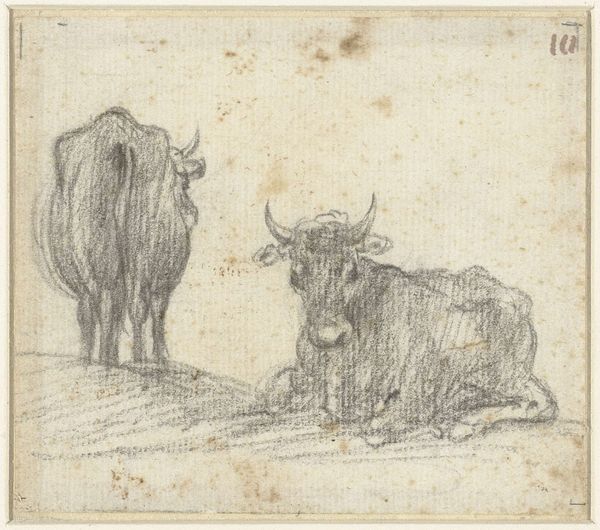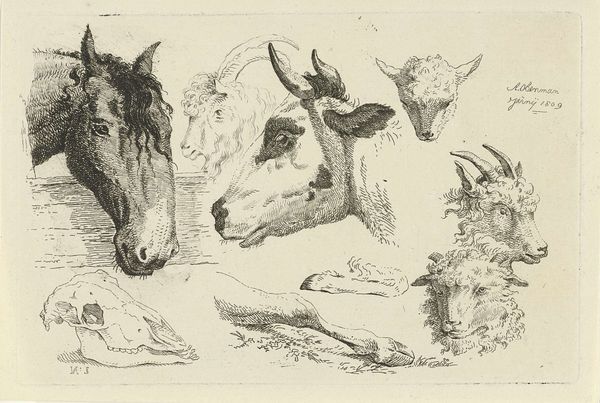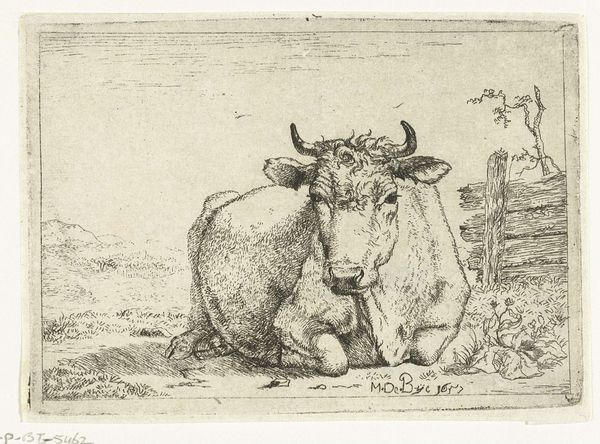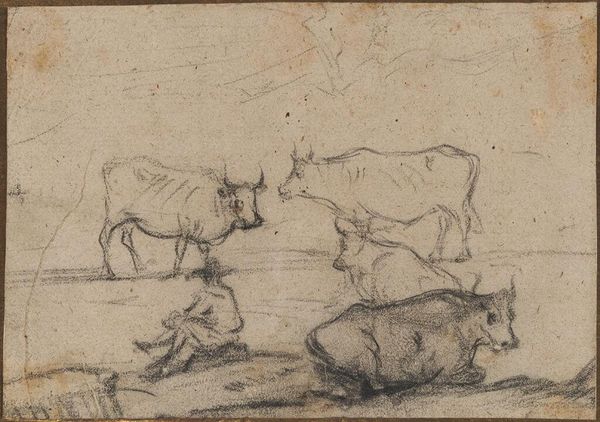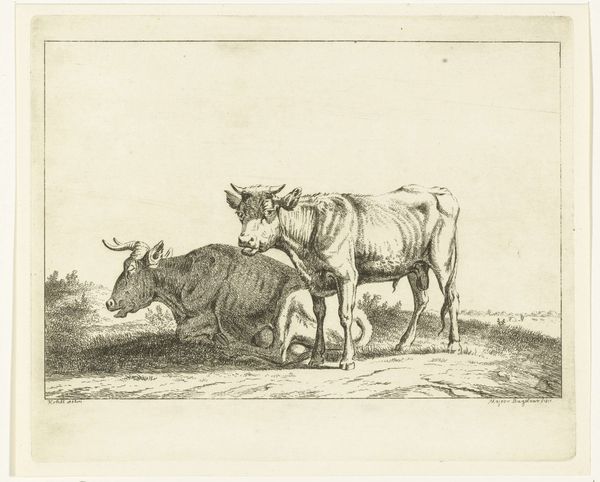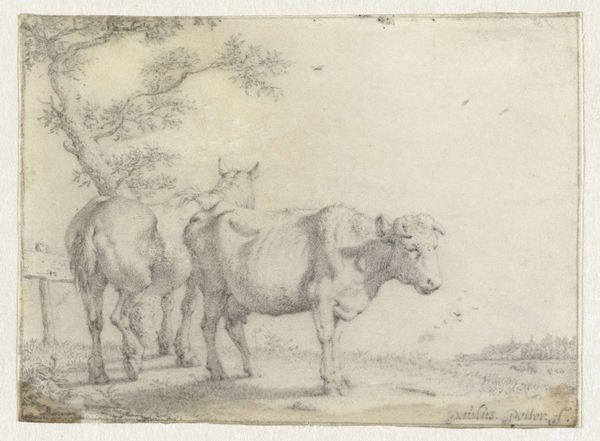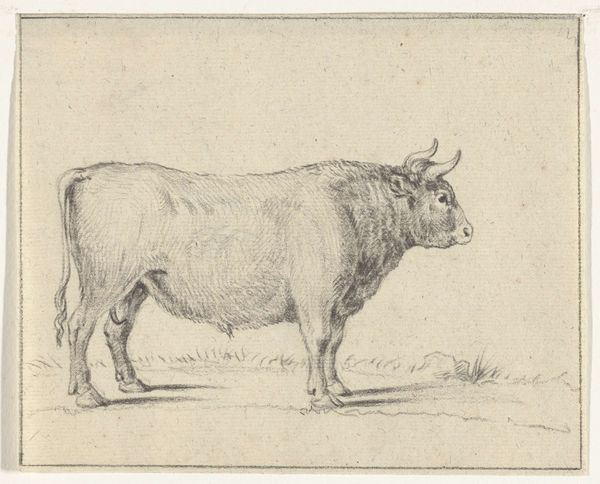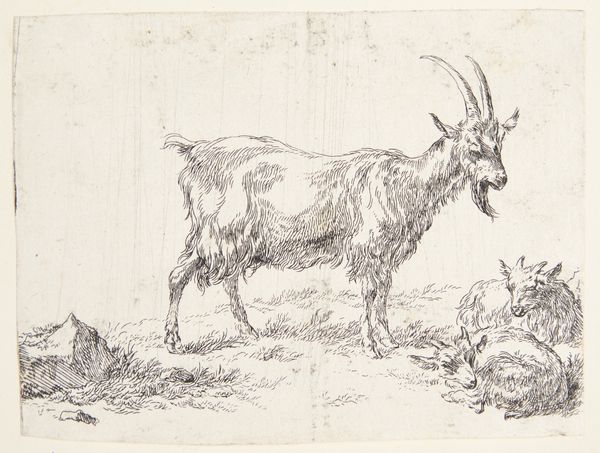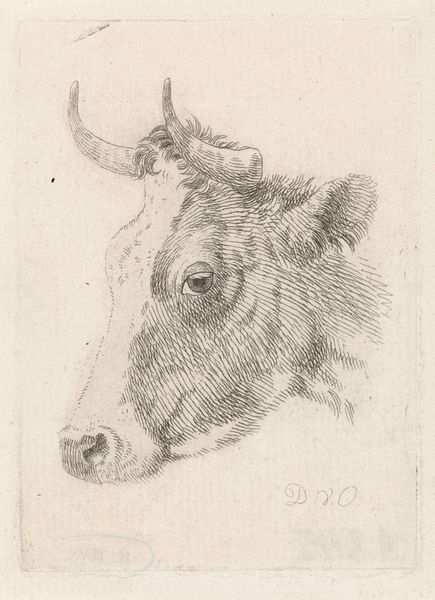
drawing, pencil
#
portrait
#
drawing
#
pencil
#
realism
Dimensions: height 93 mm, width 143 mm
Copyright: Rijks Museum: Open Domain
Curator: Standing before us, we have Albertus Verhoesen's "Vijf koppen van koeien," a pencil drawing created in 1827. It’s currently housed here at the Rijksmuseum. Editor: Oh, my goodness! It's like a bovine lineup, all sketched with such delicate lines. I’m getting a strong feeling of calm… a bit like eavesdropping on a quiet pasture conversation. Curator: That's a lovely way to put it. You know, sketches like this were often used as studies. Artists like Verhoesen would meticulously detail anatomical features in preparation for larger works, especially animal portraits, which were very popular back then. These detailed studies speak of the role of agriculture at the time, a focus of many artists in the 19th Century, from Troyon to Van Marcke. It marks a deep sense of national pride, but also an expression of power through livestock ownership. Editor: Ah, I see! It's not just pretty pictures, but a snapshot of values. And the precision, it feels almost scientific but softens from scientific rigor and lands instead at devotion… Look at how he captures each distinct personality – some appear placid, some curious, and others seem downright… grumpy! Curator: Indeed. Though created nearly two centuries ago, the symbols resonate. Cows are, for many cultures, emblems of prosperity, gentleness, motherhood even. It reminds us of humanity’s interconnectedness with the natural world, which has existed for millennia and, given current developments, which are worth cherishing now more than ever. Editor: That really comes through in their eyes, doesn't it? Something so soulful and grounded and almost overwhelmingly feminine… Editor: Mmh, what a treat this was. Curator: Absolutely, the silent symphony of the animal kingdom revealed by Verhoesen.
Comments
No comments
Be the first to comment and join the conversation on the ultimate creative platform.
